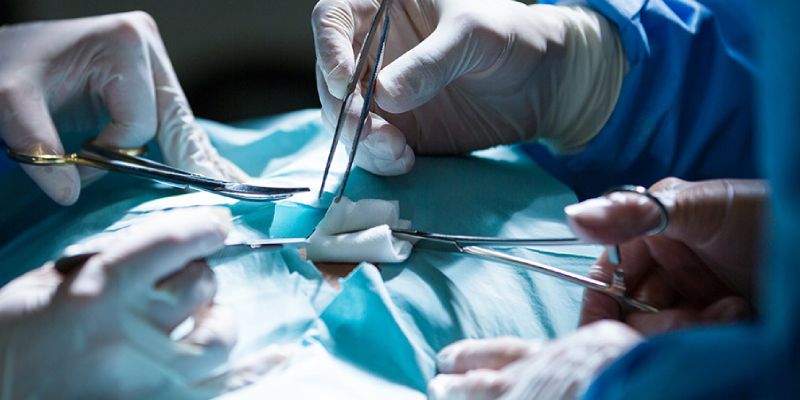
Laser & Perianal Surgery
Laser and perianal surgeries are advanced medical procedures used to treat conditions affecting the anal and rectal region, such as piles (hemorrhoids), fissures, fistulas, and pilonidal sinus. Traditionally, these conditions were treated with open surgery, which involved significant pain, bleeding, and long recovery periods. With the introduction of laser technology and minimally invasive techniques, perianal surgeries have become much safer, less painful, and more effective. These procedures involve the use of high-intensity laser beams to precisely target diseased tissues while minimizing damage to surrounding healthy tissues. As a result, patients experience faster recovery, minimal blood loss, and lower recurrence rates.
Causes and Risk Factors
Perianal conditions develop due to a combination of lifestyle, genetic, and medical factors. Some common causes and risk factors that may lead to perianal diseases requiring surgical treatment include:
– Chronic constipation or straining during bowel movements
– Sedentary lifestyle and lack of exercise
– Poor dietary habits with low fiber intake
– Pregnancy and childbirth (especially in the case of piles and fissures)
– Obesity and excess weight putting pressure on pelvic veins
– Family history of perianal disorders
– Repeated infections or abscess formation
– Prolonged sitting for work or travel
Symptoms That May Require Surgery
Laser and perianal surgeries are usually recommended when conservative treatments such as dietary changes, medications, or lifestyle modifications fail to provide relief. Common symptoms that indicate the need for surgical intervention include:
– Persistent pain or discomfort in the anal region
– Bleeding during or after bowel movements
– Swelling, lumps, or prolapse around the anus
– Non-healing abscess or recurrent infections
– Formation of abnormal tracts (fistula)
– Pus or foul-smelling discharge
– Difficulty in sitting or carrying out daily activities
– Recurrence of piles, fissures, or pilonidal sinus despite medical management
Diagnosis
Before recommending laser or perianal surgery, doctors carry out a detailed medical history and physical examination. Tests may include proctoscopy, sigmoidoscopy, or colonoscopy to examine the rectal and anal canal in detail. Imaging tests like MRI or ultrasound may be required in cases of fistula or pilonidal sinus to identify the exact tract and severity. Based on these findings, the most appropriate treatment plan is chosen to provide long-term relief and prevent recurrence.
Types of Laser & Perianal Surgeries
Different laser and minimally invasive techniques are available depending on the specific condition being treated. Common procedures include:
– Laser Hemorrhoidoplasty (for piles): A laser fiber is used to shrink hemorrhoidal tissue without cutting, reducing pain and bleeding.
– Laser Fissurectomy: Used for chronic anal fissures that do not heal with medications, where laser energy helps promote healing and reduces muscle spasm.
– FiLaC (Fistula Laser Closure): A minimally invasive technique where laser energy is used to seal the fistula tract from the inside, avoiding major cuts.
– VAAFT (Video-Assisted Anal Fistula Treatment): Involves using an endoscopic camera to visualize and treat complex fistulas with minimal tissue damage.
– Laser Pilonidal Sinus Surgery: A precise technique that uses laser energy to remove sinus tracts and promote faster healing with minimal recurrence.
– Hybrid Laser Techniques: A combination of laser and surgical methods used in complex or recurrent perianal conditions.
Recovery and Post-Surgery Care
One of the greatest advantages of laser and perianal surgeries is the quick recovery time. Most patients are discharged on the same day or within 24 hours. Recovery involves minimal pain, faster wound healing, and early return to normal activities. Doctors generally recommend a high-fiber diet, adequate water intake, and avoidance of straining during bowel movements. Sitz baths, pain relievers, and stool softeners may also be prescribed to enhance comfort and healing. Regular follow-up ensures that the condition is fully resolved and reduces the risk of recurrence.
Benefits of Laser & Perianal Surgery
Laser technology has revolutionized the treatment of perianal diseases. The key benefits include:
– Minimally invasive with smaller cuts or no cuts
– Minimal bleeding and reduced risk of infection
– Less post-operative pain compared to open surgery
– Faster recovery and early return to work
– Day-care procedure in most cases
– Reduced chances of recurrence
– Better cosmetic and functional outcomes

